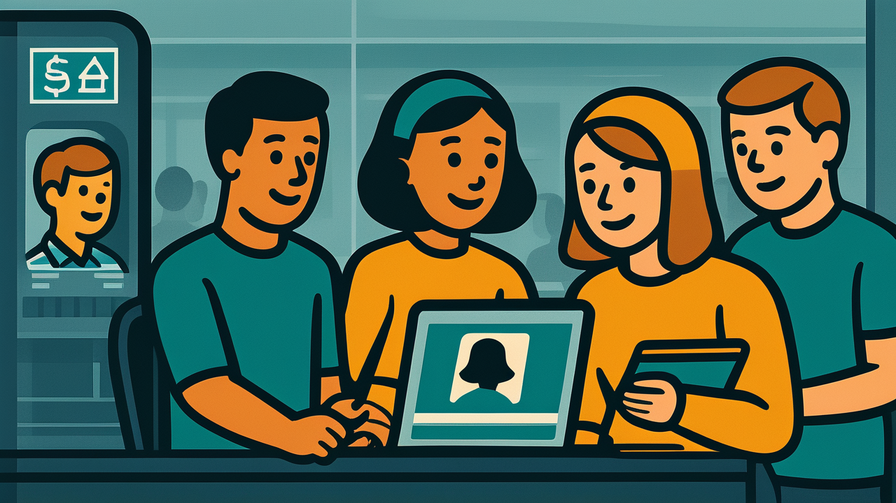[Disclaimer] This article is reconstructed based on information from external sources. Please verify the original source before referring to this content.
News Summary
The following content was published online. A translated summary is presented below. See the source for details.
Google has announced Sparkasse, Germany’s largest banking network, as its first national credential partner for age assurance in the European Union. This partnership represents a significant step in implementing the EU’s Digital Services Act requirements for protecting minors online. Sparkasse, which serves over 50 million customers across Germany, will provide secure age verification services that allow users to prove they’re old enough to access certain content without revealing their full identity. The system works by using banking credentials—since banks already verify customer ages for financial services—to create digital certificates confirming someone is over a certain age (13, 16, or 18) without sharing personal details with websites. This approach balances child safety with privacy protection, as websites learn only that a user meets age requirements, not their actual age or identity. The technology uses encrypted tokens that expire after verification, preventing tracking across sites. This model could expand across Europe, with other banks in different EU countries potentially joining. The initiative addresses growing concerns about children accessing inappropriate content while avoiding invasive identity checks that could compromise user privacy.
Source: Google Blog
Our Commentary
Background and Context

Remember when you could just click “Yes, I’m 18” to access certain websites? Those days are ending in Europe. The EU is requiring real age verification for many online services, and they’ve found a clever way to do it without invading your privacy.
Instead of uploading your ID to every website (scary!), your bank—which already knows your age—can vouch for you without revealing who you are. It’s like having a trusted adult say “Yes, they’re old enough” without telling everyone your name and address.
Expert Analysis
Here’s how this innovative system works:
The Problem It Solves: The EU wants to protect kids from inappropriate content, but traditional age verification is problematic. Uploading IDs to random websites risks identity theft, and lying about your age is too easy.
The Smart Solution:
• You log into your bank app (like Sparkasse)
• Bank confirms you’re over the required age
• Bank gives you a digital token (like a temporary pass)
• Website sees only “User is old enough”—not your name or exact age
• Token expires, so websites can’t track you
Why Banks? Banks already verify everyone’s age for legal reasons and have super-secure systems. They’re trusted institutions that won’t sell your data to advertisers.
Additional Data and Fact Reinforcement
Impact on different age groups:
• Under 13: May be blocked from social media entirely
• 13-15: Access to age-appropriate content only
• 16-17: Most content accessible, some restrictions remain
• 18+: Full access to all legal content
What this means for teens:
• No more lying about birthdates
• Parents might have more control over access
• Better protection from inappropriate content
• Privacy still protected from websites
• May need parent permission for bank verification
Related News
This is part of Europe’s broader push to make the internet safer for young people. The Digital Services Act, passed in 2022, requires platforms to protect minors from harmful content. We’ve already seen changes like Instagram hiding likes and TikTok adding screen time limits.
Other countries are watching closely. The UK is developing its own age verification system, while some US states are passing similar laws. This could become the global standard for how young people access online content. Tech companies initially resisted, but partnerships like this show they’re finding privacy-friendly solutions.
Summary

Google and Sparkasse’s partnership creates a privacy-friendly age verification system that could reshape how teens access online content across Europe, balancing safety with privacy rights. By using banks as trusted verifiers, the system avoids the privacy risks of uploading IDs everywhere.
For students, this means the internet is becoming more like the real world—with age restrictions that actually work. While it might seem annoying, it’s designed to protect you from content that could be harmful while respecting your privacy. Understanding these systems now is important because they’ll likely spread worldwide. Whether you support or oppose such measures, being informed helps you participate in discussions about your digital rights and online safety.
Public Reaction
Parents generally support the initiative, feeling relieved about better online protections. Teens have mixed reactions—some appreciate the safety measures, while others worry about restricted access. Privacy advocates praise the anonymous verification approach but warn about potential system expansion. Small websites worry about implementation costs. Gaming communities fear it could complicate accessing age-rated games. Digital rights groups emphasize the need for transparency in how age thresholds are determined.
Frequently Asked Questions
Q: Will this block me from websites I use now?
A: It depends on your age and the site’s content. Social media might require verification you’re 13+, while some content remains 18+. Educational and general sites won’t be affected.
Q: Can websites see my banking information?
A: No. Websites only receive confirmation that you meet their age requirement—they don’t see your bank details, name, or exact age.
Q: What if I don’t have a bank account?
A: The EU is working on alternative verification methods, possibly through schools or government IDs, though banks are the first implementation.


